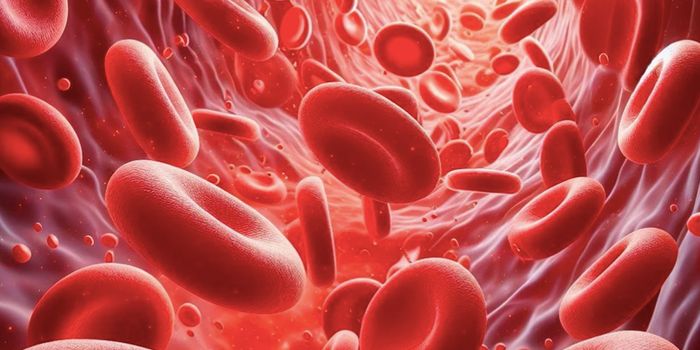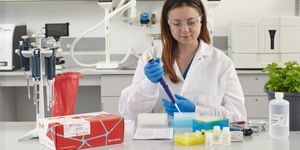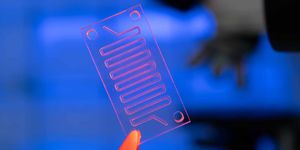Expanding the Gene-Editing Toolbox
The CRISPR-Cas9 gene-editing technology sparked a veritable revolution in the biomedical sciences, taking genetic engineering to the next level. The idea came from a system bacteria have used as a kind of immune defense, in which bacterial enzymes chopped up the genomes of viruses that infected bacteria and integrated them into the bacterial genome as a kind of memory. Researchers have taken the CRISPR-Cas9 tool and added to it in various ways, such as by using a modified Cas9 enzyme that targets only one strand of the genome, for example.
Scientists have also found that CRISPR has other functions in bacteria, which we can use to our advantage. Transposons are genetic elements that can move around the genome so easily they are sometimes called jumping genes, and there are CRISPR-associated transposons (CASTs). In these systems, CRISPR can insert large sequences into a genome without breaking both strands of DNA. CASTs can be used to edit huge portions of the genome instead of being limited to smaller changes like CRISPR-Cas9 usually is.
Reporting in the Proceedings of the National Academy of Sciences, researchers have now identified almost 1,500 CASTs. Right now, we only know of CASTs that work in bacteria, but that could change soon.
"With CASTs, we could potentially insert lots of genes, called gene cassettes, encoding multiple complicated functions," said senior study author Ilya Finkelstein, an associate professor of molecular biosciences at the University of Texas at Austin (UTA). Cassettes have been used for years in genetic engineering. For example, researchers have been able to create cassettes that include the sequence for a fluorescent molecule, attached to the sequence for a mouse gene or promotor. When that cassette is injected into mouse embryos, transgenic mice that express a glowing protein of interest are created. But that process can be time-consuming, expensive, and labor-intensive. This type of biotechnology could revolutionize the process in new ways.
It took cutting edge computer technology to get to this point. These new CASTs were identified with a supercomputer at UTA that scoured a massive database of bacterial DNA.
Several of the CASTs were experimentally verified, and the researchers are planning to test more.
"By having more than a thousand [potential CASTs], we can start to find out which ones are easiest to work with or most efficient or accurate. Hopefully there are new gene-editing systems that can do things better than the systems we had beforehand," said study co-leader Claus Wilke, chair of the Department of Integrative Biology at UTA.
They hope to eventually find one that is suitable to be applied to mammalian cells. That's "the holy grail," Finkelstein said.
Sources: University of Texas at Austin, Proceedings of the National Academy of Sciences










